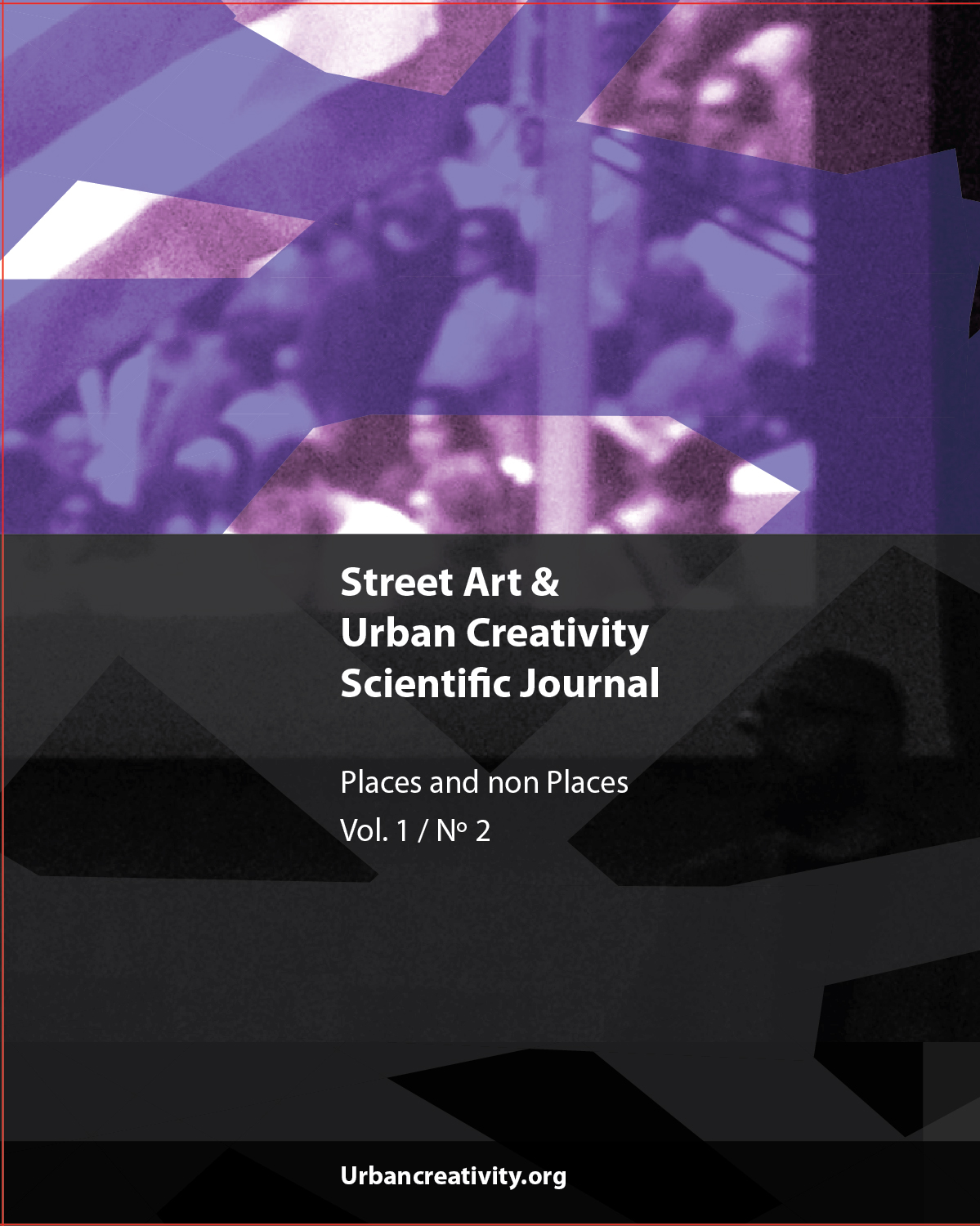OSGEMEOS and the Institutionalization of Street Art:
Cyclical Narratives
DOI:
https://doi.org/10.25765/sauc.v1i2.29Keywords:
Street Art, Institutionalization, Co-opting, Appropriation, GrafiteAbstract
When discussing the paradox of displacing the street art aesthetic, i.e. commissioning street artists to create work for art galleries, museums, or public murals, one inevitably has to address issues of co-opting, appropriation, and the institutionalization of a movement that began as a countercultural form of expression. Two commissioned pieces by OSGEMEOS are used as a case study. This paper parses through the discourse surrounding their production and removal. The goal therein is to break down these narratives and gain insight into the mechanisms at work and the inherent contradictions in the process of institutionalizing street art.
Downloads
Global Statistics ℹ️
|
152
Views
|
85
Downloads
|
|
237
Total
|
|
Downloads
Published
How to Cite
Issue
Section
License
Copyright (c) 2015 Street Art & Urban Creativity

This work is licensed under a Creative Commons Attribution-NoDerivatives 4.0 International License.
Those authors who publish in this journal accept the following terms:
-
Authors retain copyright.
-
Authors transfer to the journal the right of first publication. The journal also owns the publishing rights.
-
All published contents are governed by an Attribution-NoDerivatives 4.0 International License.
Access the informative version and legal text of the license. By virtue of this, third parties are allowed to use what is published as long as they mention the authorship of the work and the first publication in this journal. If you transform the material, you may not distribute the modified work. -
Authors may make other independent and additional contractual arrangements for non-exclusive distribution of the version of the article published in this journal (e.g., inclusion in an institutional repository or publication in a book) as long as they clearly indicate that the work was first published in this journal.
- Authors are allowed and recommended to publish their work on the Internet (for example on institutional and personal websites), following the publication of, and referencing the journal, as this could lead to constructive exchanges and a more extensive and quick circulation of published works (see The Effect of Open Access).













